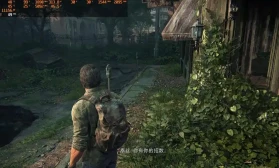The gaming industry is a dynamic and ever-evolving landscape, where blockbuster releases, indie gems, and technological breakthroughs compete for attention. For the average player, news arrives as polished press releases and official trailers. But beneath this surface lies a deeper current—a world of insider knowledge, development whispers, and strategic maneuvers. This is "Deep Game News," and today, we're pulling back the curtain to reveal the insider tips that can transform how you perceive and engage with the world of gaming.
Decoding the Announcement Cycle: More Than Meets the Eye
When a publisher announces a game, the timing, platform, and messaging are never accidental. Insiders know that a "first look" trailer dropped at a major event like The Game Awards is strategically designed to capture maximum hype, often for a game years away from completion. Conversely, a shadow-drop announcement on a Nintendo Direct, where a game is revealed and released immediately, is a calculated move to generate explosive word-of-mouth and avoid prolonged scrutiny.
Insider Tip #1: Watch the Financial Calendar. Major announcements are frequently timed to coincide with quarterly earnings reports. A publisher needing to reassure investors about its future pipeline might announce multiple new projects, even if they are in early development. This creates a perception of strength and long-term planning, regardless of the actual state of the projects.
Insider Tip #2: The "Vertical Slice" Illusion. That breathtaking gameplay demo? It's often a "vertical slice"—a highly polished, meticulously crafted few minutes of gameplay designed solely for demonstration. It doesn't always represent the final game's quality or stability. Insiders pay less attention to the flashy set-pieces and more to the core mechanics and UI elements, which are harder to fake and more indicative of the true gameplay loop.
The Art of the "Leak": Planted vs. Organic
In the deep game news ecosystem, leaks are a currency of their own. However, not all leaks are created equal.

Organic Leaks genuinely come from anonymous sources within development studios or publishing partners. These can be disgruntled employees, QA testers, or partners who break an NDA. They often come with caveats: features might be cut, visuals are from an old build, and the information is raw and unverified.
Strategic "Leaks" (or Plants) are an open secret in the industry. A publisher might intentionally "leak" information to a credible journalist or influencer to gauge public reaction to a controversial feature—like a always-online requirement or a shift to a live-service model. If the backlash is severe, they can quietly alter plans without ever having to officially commit to the idea. It's a risk-free form of market research.
Insider Tip #3: Consider the Source. Before believing a leak, ask: who benefits? Does a random 4Chan user have real info, or are they clout-chasing? Does a report from a established journalist like Jason Schreier align with known publisher strategies? Credibility is everything.
Beyond the Hype: Reading Between the Patch Notes
Post-launch support is where many games are truly made or broken. Insider knowledge isn't just about upcoming games; it's about understanding the ongoing health of the ones you play.
Insider Tip #4: Scrutinize Job Listings. Studios often reveal their future plans through hiring. If a developer for a single-player RPG starts hiring for multiplayer network engineers, it's a strong signal that a DLC or new game mode is heading in that direction. Similarly, listings for roles working on a "new unannounced IP" can signal a studio's pivot long before any official announcement.
Insider Tip #5: Deep Dive into Patches and Updates. Don't just skim patch notes for bug fixes. Look for subtle buffs and nerfs that aren't in the notes—a practice known as "stealth patching." Data miners scour game files after every update, uncovering hidden assets, code references to upcoming characters, or even entire maps long before they are announced. Following reliable data miners on social media is like having a direct line to the game's future.
The Community as a Sensor Network
The most valuable insider tip is that the community itself is a powerful sensor network. Dedicated fans on subreddits, Discord servers, and specialized forums piece together information with detective-like precision.
Insider Tip #6: Follow the Playtesters. Closed alphas and betas are not just for testing; they are marketing tools. Participants are under strict NDAs, but patterns emerge. A sudden influx of content creators invited to a playtest often precedes a marketing blitz. Furthermore, the geographical scope of a beta test can indicate server load testing for a specific region's launch.
Insider Tip #7: Listen to the Right Voices. Not every influencer has insider info. True insiders are often industry veterans, former developers, or journalists with proven track records who cultivate sources over years. They trade in nuance and context, not just sensational headlines. Their analysis of a executive's vague statement or a studio's restructuring can provide a more accurate picture of a game's fate than any official statement.
Navigating the Deep Waters
Armed with these insider perspectives, you can transition from a passive consumer of game news to an active analyst. The goal isn't to become cynical but to develop a more informed and critical eye. Understand that game development is a complex business of artistic passion, technical challenges, and corporate strategy.
The next time a breathtaking trailer drops, you'll appreciate the artistry while also considering the vertical slice. The next time a leak surfaces, you'll evaluate its source and potential motive. And the next time you read patch notes, you'll wonder what secrets the data miners will uncover.
The deep game news is always flowing. By learning its language and patterns, you don't just read the news—you understand it.













